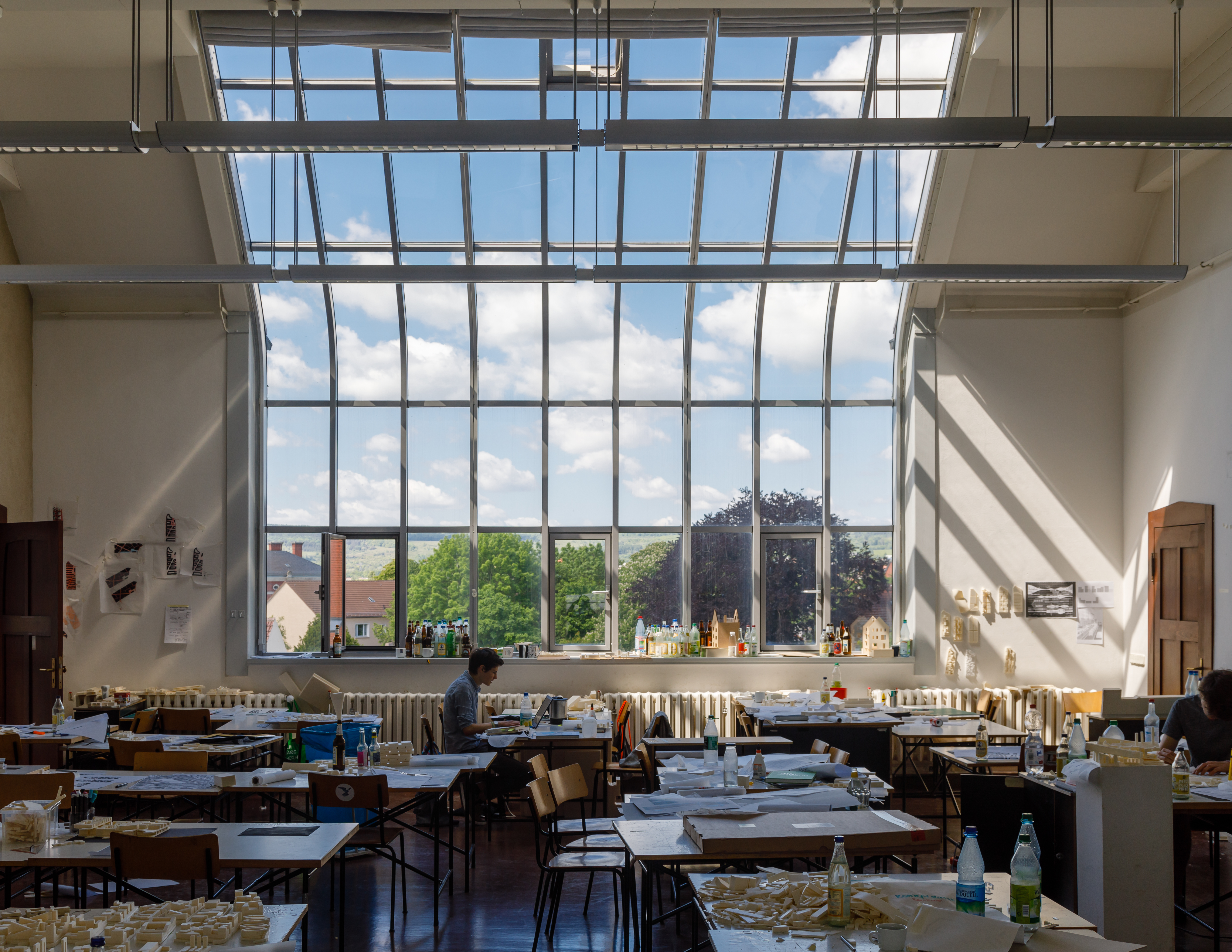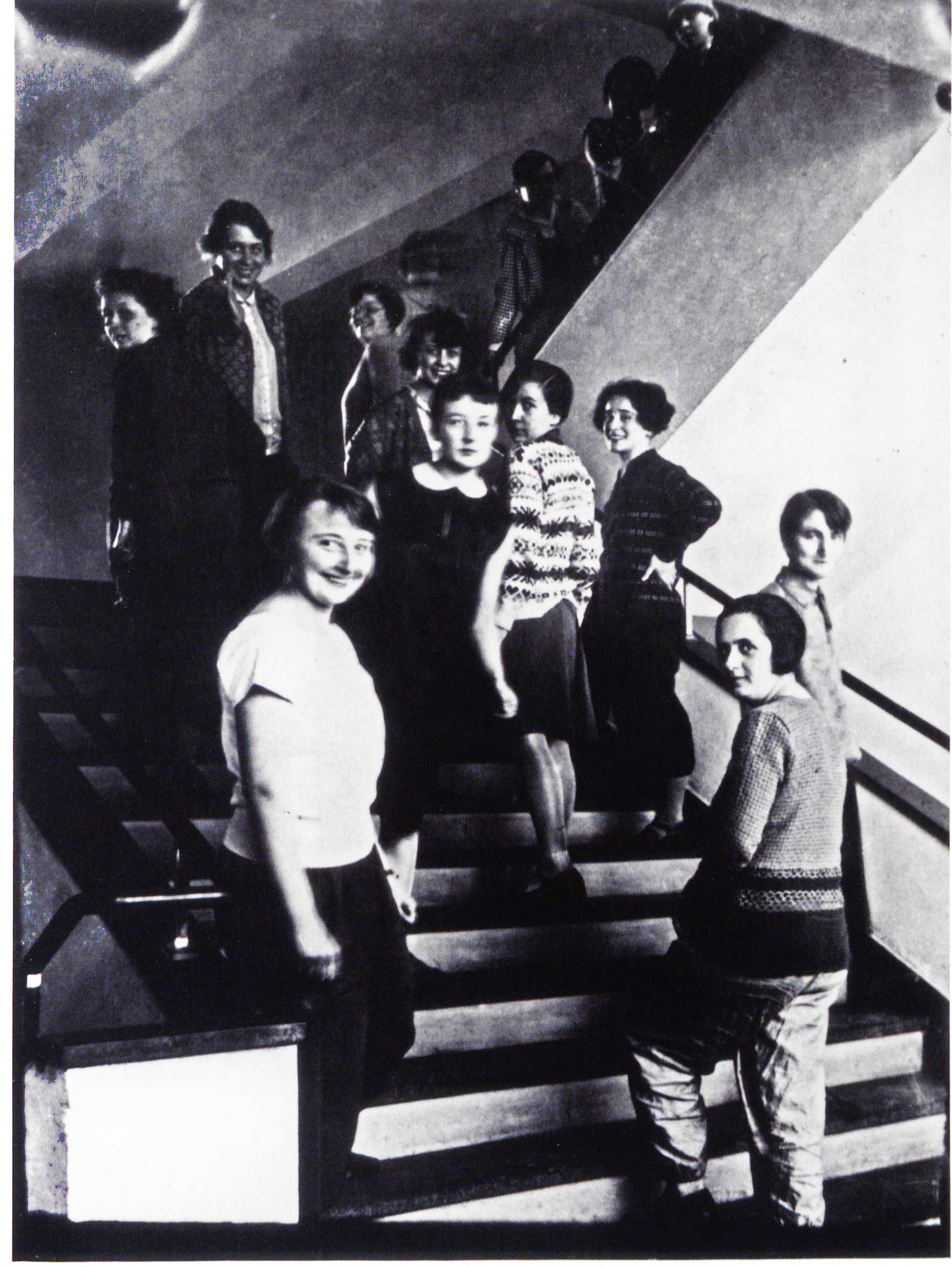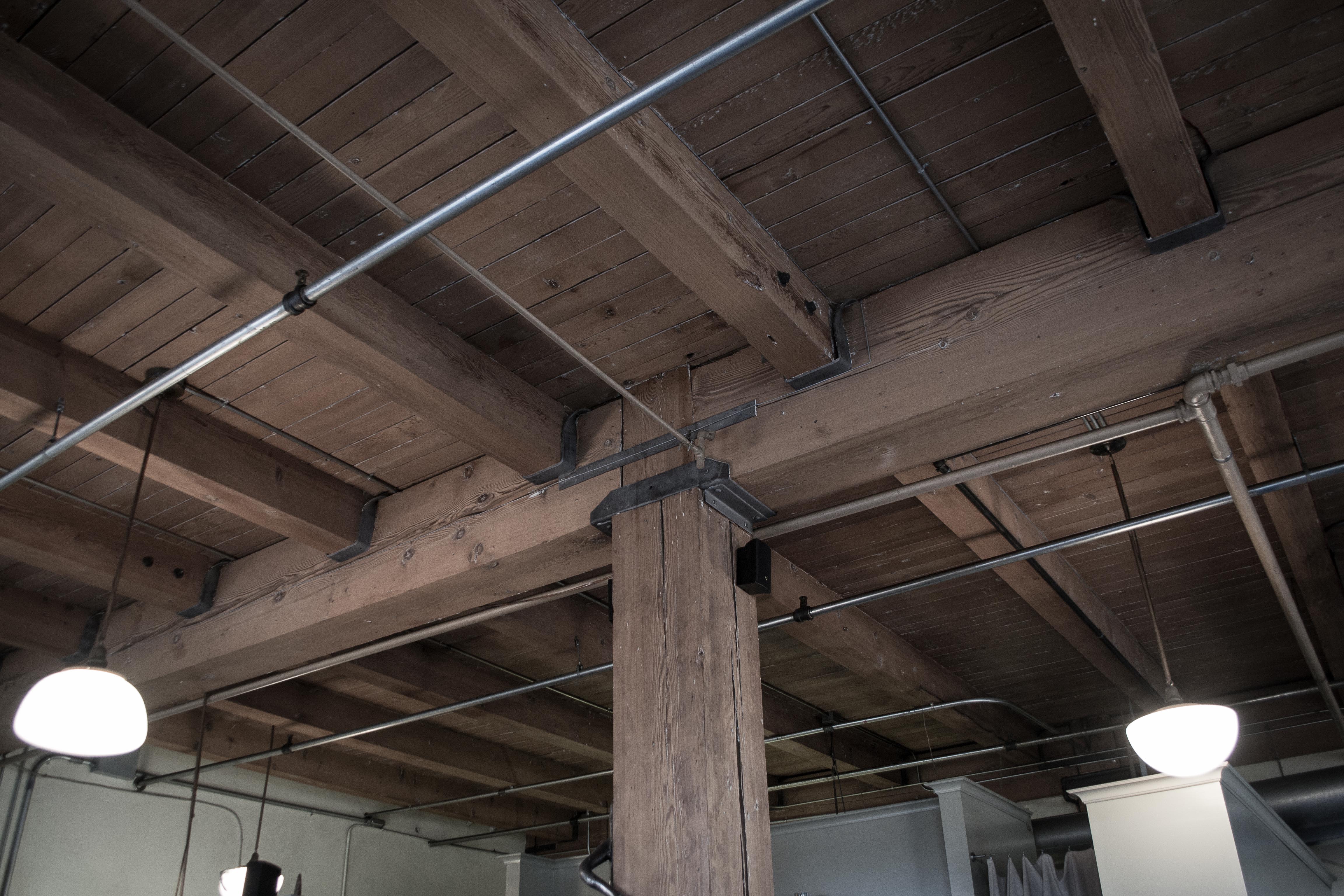|
Bauhaus And Its Sites In Weimar, Dessau And Bernau
Bauhaus and its Sites in Weimar, Dessau and Bernau is a World Heritage Site in Germany, comprising six separate sites which are associated with the Bauhaus art school. It was designated in 1996 with four initial sites, and in 2017 two further sites were added. The Bauhaus was only in operation from 1919 until 1933 and it educated no more than 1,250 students, of whom only 155 actually graduated with a Bauhaus Diploma.Arts in Exil. Objects. Konrad Püschel:List of Names Retrieved 24 April 2019Knorr, Susan; Kern, Ingolf; Welzbacher, Christian (2012) ''Bauhaus Reisebuch'', Bonn: Dumont Nevertheless, the school revolutionized 20th century architectural and aesthetic thinking and practice. " [...More Info...] [...Related Items...] OR: [Wikipedia] [Google] [Baidu] |
World Heritage Site
A World Heritage Site is a landmark or area with legal protection by an international convention administered by the United Nations Educational, Scientific and Cultural Organization (UNESCO). World Heritage Sites are designated by UNESCO for having cultural, historical, scientific or other form of significance. The sites are judged to contain " cultural and natural heritage around the world considered to be of outstanding value to humanity". To be selected, a World Heritage Site must be a somehow unique landmark which is geographically and historically identifiable and has special cultural or physical significance. For example, World Heritage Sites might be ancient ruins or historical structures, buildings, cities, deserts, forests, islands, lakes, monuments, mountains, or wilderness areas. A World Heritage Site may signify a remarkable accomplishment of humanity, and serve as evidence of our intellectual history on the planet, or it might be a place of great natural beauty. ... [...More Info...] [...Related Items...] OR: [Wikipedia] [Google] [Baidu] |
Marcel Breuer
Marcel Lajos Breuer ( ; 21 May 1902 – 1 July 1981), was a Hungarian-born modernist architect and furniture designer. At the Bauhaus he designed the Wassily Chair and the Cesca Chair, which ''The New York Times'' have called some of the most important chairs of the 20th century. Breuer extended the sculpture vocabulary he had developed in the carpentry shop at the Bauhaus into a personal architecture that made him one of the world's most popular architects at the peak of 20th-century design. His work includes art museums, libraries, college buildings, office buildings, and residences. Many are in a Brutalist architecture style, including the former IBM Research and Development facility which was the birthplace of the first personal computer. He is regarded as one of the great innovators of modern furniture design and one of the most-influential exponents of the International Style. Life, work and inventions Commonly known to his friends and associates as Lajkó ( ; the dim ... [...More Info...] [...Related Items...] OR: [Wikipedia] [Google] [Baidu] |
Gunta Stölzl
Gunta Stölzl (5 March 1897 – 22 April 1983) was a German textile artist who played a fundamental role in the development of the Bauhaus school's weaving workshop, where she created enormous change as it transitioned from individual pictorial works to modern industrial designs. She was one of a small number of female teachers on the Bauhaus' staff and the first to hold the title of "Master". Her textile work is thought to typify the distinctive style of Bauhaus textiles. She joined the Bauhaus as a student in 1919, became a junior master in 1927. She was dismissed for political reasons in 1931, two years before the Bauhaus closed under pressure from the Nazis. The textile department was a neglected part of the Bauhaus when Stölzl began her career, and its active masters were weak on the technical aspects of textile production. She soon became a mentor to other students and reopened the Bauhaus dye studios in 1921. After a brief departure, Stölzl became the school's we ... [...More Info...] [...Related Items...] OR: [Wikipedia] [Google] [Baidu] |
Marianne Brandt
Marianne Brandt (1 October 1893 – 18 June 1983) was a German painter, sculptor, photographer, metalsmith, and designer who studied at the Bauhaus art school in Weimar and later became head of the Bauhaus ''Metall-Werkstatt'' (Metal Workshop) in Dessau in 1927. Today, Brandt's designs for household objects such as lamps and ashtrays are considered timeless examples of modern industrial design. She also created photomontages. Biography Brandt was born into a prominent family in Chemnitz as Marianne Liebe. In 1919 she married the Norwegian painter Erik Brandt, with whom she travelled in Norway and France. She trained as a painter before joining the Weimar Bauhaus in 1924 to study metalworking. There she became a student of Hungarian modernist theorist and designer László Moholy-Nagy in the metal workshop. She quickly rose to the position of workshop assistant and succeeded Moholy as the workshop's acting director in 1928, serving in the post for one year and negotiating som ... [...More Info...] [...Related Items...] OR: [Wikipedia] [Google] [Baidu] |
Gertrud Arndt
Gertrud Arndt (''née'' Hantschk; 20 September 1903 – 10 July 2000) was a German photographer and designer associated with the Bauhaus movement. She is remembered for her pioneering series of self-portraits from around 1930. Biography Born Gertrud Hantschk in Ratibor (then Upper Silesia), in September 1903, Arndt began her artistic studies as a student at the Kunstgewerbeschule in Erfurt.Witkovsky, Matthew S., and Peter Demetz. Foto : Modernity In Central Europe, 1918-1945. Washington, DC: National Gallery of Art in association with Thames and Hudson, 2007. Her interest in photography developed while serving at an architectural office in Erfurt, where she learned darkroom techniques and began taking photographs of local buildings. None of these early photographs exist. Thanks to a scholarship, she was a student at the Bauhaus from 1923 to 1927, where she studied under László Moholy-Nagy, Wassily Kandinsky, and Paul Klee. Arndt had initially hoped to study architecture, howev ... [...More Info...] [...Related Items...] OR: [Wikipedia] [Google] [Baidu] |
Joists
A joist is a horizontal structural member used in framing to span an open space, often between beams that subsequently transfer loads to vertical members. When incorporated into a floor framing system, joists serve to provide stiffness to the subfloor sheathing, allowing it to function as a horizontal diaphragm. Joists are often doubled or tripled, placed side by side, where conditions warrant, such as where wall partitions require support. Joists are either made of wood, engineered wood, or steel, each of which has unique characteristics. Typically, wood joists have the cross section of a plank with the longer faces positioned vertically. However, engineered wood joists may have a cross section resembling the Roman capital letter ""; these joists are referred to as -joists. Steel joists can take on various shapes, resembling the Roman capital letters "C", "", "L" and "S". Wood joists were also used in old-style timber framing. The invention of the circular saw for use in mod ... [...More Info...] [...Related Items...] OR: [Wikipedia] [Google] [Baidu] |
Adolf Meyer (architect)
Adolf Meyer (17 June, 1881, 14 July, 1929, the Island of ) was a German architect. A student and employee of both Bruno Paul and Peter Behrens, Meyer became the office boss of the firm of Walter Gropius around 1915 and a full partner afterwards. In 1919 Gropius appointed Meyer as a master at the Bauhaus, where he taught work drawing and construction technique. Meyer is also credited as co-designer of the Gropius entry for the 1922 Chicago Tribune Tower competition. From 1926 he practiced as an architect in the New Frankfurt New Frankfurt (German: ''Neues Frankfurt'') was an affordable public housing program in Frankfurt started in 1925 and completed in 1930. It was also the name of the accompanying magazine that was published from 1926 to 1931 dedicated to interna ... project. Literature * Susan R. Henderson. "Building Culture: Ernst May and the New Frankfurt Initiative, 19261931." Peter Lang, 2013. External links Biography and photo at Bauhaus (in German) 1881 ... [...More Info...] [...Related Items...] OR: [Wikipedia] [Google] [Baidu] |
Fagus Factory
The Fagus Factory (German: ''Fagus Fabrik'' or ''Fagus Werk''), a shoe last factory in Alfeld on the Leine, Lower Saxony, Germany, is an important example of early modern architecture. Commissioned by owner Carl Benscheidt who wanted a radical structure to express the company's break from the past, the factory was designed by Walter Gropius and Adolf Meyer. It was constructed between 1911 and 1913, with additions and interiors completed in 1925. Because of its influence in the development of modern architecture and outstanding design, the factory has been listed as a UNESCO World Heritage Site since 2011. Influences The building that had the greatest influence on the Fagus factory design was the 1909 AEG turbine factory in Berlin, designed by Peter Behrens. Gropius and Meyer had both worked on the project and with the Fagus factory they presented their interpretation and criticism of their teacher’s work. The Fagus main building can be seen as an inversion of the AEG turbi ... [...More Info...] [...Related Items...] OR: [Wikipedia] [Google] [Baidu] |
Centre Pompidou
The Centre Pompidou (), more fully the Centre national d'art et de culture Georges-Pompidou ( en, National Georges Pompidou Centre of Art and Culture), also known as the Pompidou Centre in English, is a complex building in the Beaubourg area of the 4th arrondissement of Paris, near Les Halles, rue Montorgueil, and the Marais. It was designed in the style of high-tech architecture by the architectural team of Richard Rogers, Su Rogers, Renzo Piano, along with Gianfranco Franchini. It houses the Bibliothèque publique d'information (Public Information Library), a vast public library; the Musée National d'Art Moderne, which is the largest museum for modern art in Europe; and IRCAM, a centre for music and acoustic research. Because of its location, the centre is known locally as Beaubourg (). It is named after Georges Pompidou, the President of France from 1969 to 1974 who commissioned the building, and was officially opened on 31 January 1977 by President Valéry Giscard d'Estai ... [...More Info...] [...Related Items...] OR: [Wikipedia] [Google] [Baidu] |
Arte
Arte (; (), sometimes stylized in lowercase or uppercase in its logo) is a European public service channel dedicated to culture. It is made up of three separate companies: the Strasbourg-based European Economic Interest Grouping ARTE, plus two member companies acting as editorial and programme production centres, ARTE France in Paris (formerly known as La Sept) and ARTE Deutschland in Baden-Baden (a subsidiary of the two main public German TV networks ARD and ZDF). As an international joint venture (an EEIG), its programmes focus on audiences in both countries. Because of this, the channel has two audio tracks and two subtitle tracks, one each in French and German. 80% of Arte's programming is provided by its French and German subsidiaries, each making half of the programmes. The remainder is provided by the European subsidiary and the channel's European partners. Selected programmes are available with English, Spanish, Polish and Italian subtitles online. In J ... [...More Info...] [...Related Items...] OR: [Wikipedia] [Google] [Baidu] |
6252 Dessau
6 (six) is the natural number following 5 and preceding 7. It is a composite number and the smallest perfect number. In mathematics Six is the smallest positive integer which is neither a square number nor a prime number; it is the second smallest composite number, behind 4; its proper divisors are , and . Since 6 equals the sum of its proper divisors, it is a perfect number; 6 is the smallest of the perfect numbers. It is also the smallest Granville number, or \mathcal-perfect number. As a perfect number: *6 is related to the Mersenne prime 3, since . (The next perfect number is 28.) *6 is the only even perfect number that is not the sum of successive odd cubes. *6 is the root of the 6-aliquot tree, and is itself the aliquot sum of only one other number; the square number, . Six is the only number that is both the sum and the product of three consecutive positive numbers. Unrelated to 6's being a perfect number, a Golomb ruler of length 6 is a "perfect ruler". Six is a co ... [...More Info...] [...Related Items...] OR: [Wikipedia] [Google] [Baidu] |








